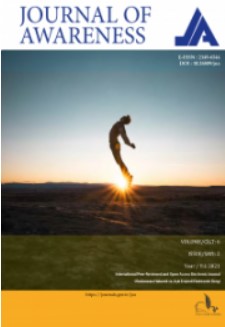Literature as cultural ecology: a cultural ecological study on Emerson and Whitman
Literature as cultural ecology: a cultural ecological study on Emerson and Whitman
Author(s): Melis MülazımoğluSubject(s): Comparative Study of Literature, Human Ecology, 19th Century, Theory of Literature, American Literature
Published by: Rating Academy
Keywords: Cultural Ecology; Transcendentalism; Ecocriticism; Whitman; Emerson;
Summary/Abstract: This article is intended to find out how a cultural ecological reading is possible for the selected poems of Emerson and Whitman who are considered as the leading figures of the nineteenth century American Renaissance, the artistic spirit which has flourished between the 1830s-1860s in the wake of the Romantic movement. Transcendentalism in America, as a projection of English Romanticism and Christian Unitarianism interprets the organic interaction in-between man, nature and God. Giving the earliest examples of Transcendentalist nature-writing, Emerson and Whitman are open for a cultural-ecological reading because cultural ecology as a new direction in ecocriticism, brings together ecology and aesthetics, nature and man, environment and literature, language and culture in other words human and non-human universes. As an inter-disciplinary theory developing in a dynamic way, cultural ecology, according to Zapf, “can be described as the interrelation of three major discursive functions such as the ‘culture-critical metadiscourse,’ ‘an imaginative counter-discourse,’ and a ‘reintegrative inter-discourse’” (2016: 96). In the first model, the artistic work is analyzed to reveal the workings of an oppressive ideological structure and dogmatic values of the society whereas the second one points out the representations of otherness and marginalization within a text and finally last one tries to exemplify the co-evolution of both models in searching for the “transformative role of literature” within “eco-semiotic” discourse. In that sense, this article intends to find out how the poetic examples of Emerson and Whitman fit into the triadic model of cultural ecology. The argument proceeds through the illustration of Zapf’s triadic model in Emerson’s “Hamatreya,” and Whitman’s “The Splendid, Silent Sun.”
Journal: Journal of Awareness (JoA)
- Issue Year: 6/2021
- Issue No: 2
- Page Range: 95-104
- Page Count: 10
- Language: English

